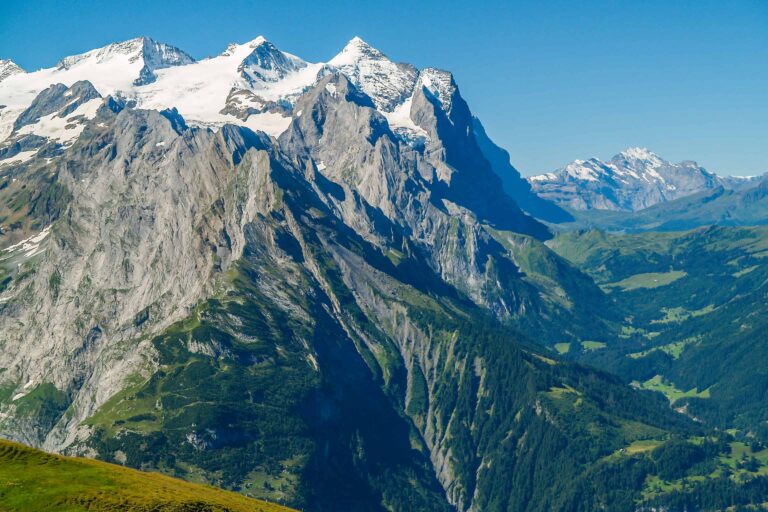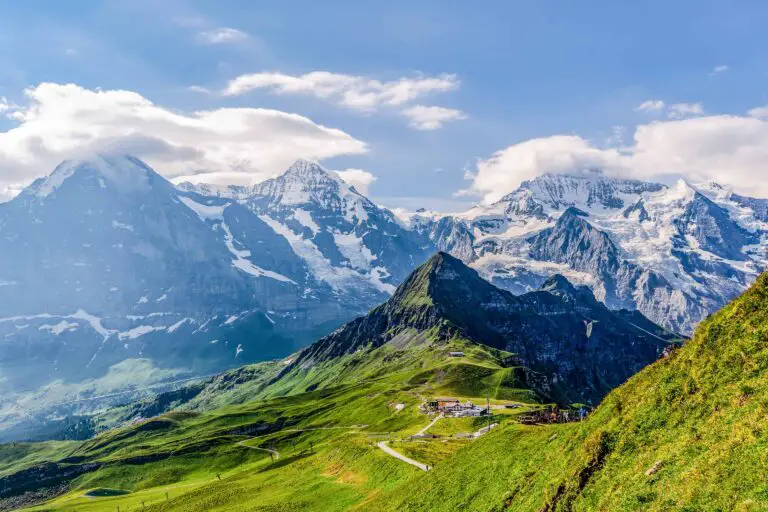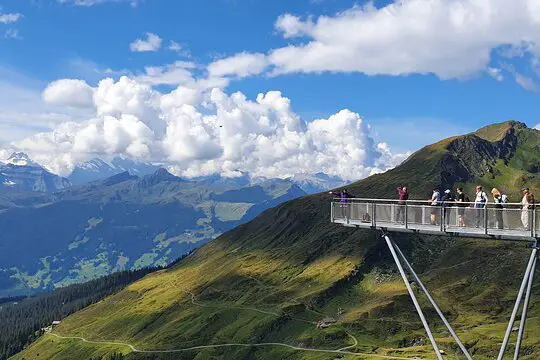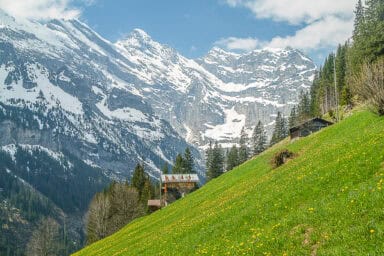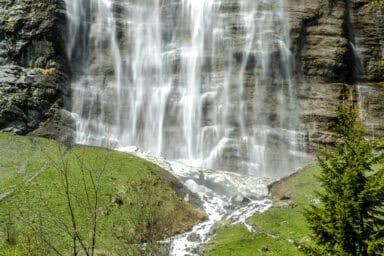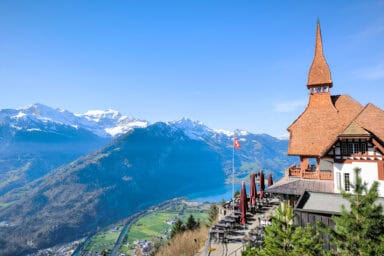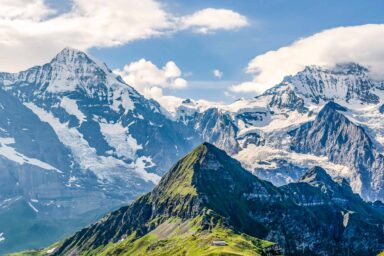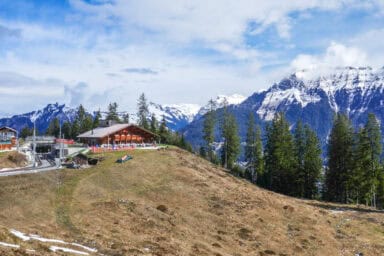Traveling info and map of the Jungfrau Region 
How to reach the Jungfrau Region
The town of Interlaken is the gateway to the Jungfrau Region. Please learn how to get there my Interlaken travel guide. Here's how to travel to the other towns:
How to travel in the Jungfrau Region: car versus public transport
You don't need a car to get around in the Jungfrau Region. From Interlaken, a car only gets you to Lauterbrunnen/Stechelberg and Grindelwald. From there, trains and cable cars take you up in the mountains. There are frequent trains from Interlaken to Grindelwald and Lauterbrunnen.
Please find a comparison between modes of transport here.
Car-free areas
The Jungfrau Region is car-free beyond Grindelwald and Stechelberg (near Lauterbrunnen). Mountain tops and the villages of Wengen, Mürren, and Gimmelwald can be reached by public transport only.
So you'll have to park in Interlaken, Matten, Lauterbrunnen or Grindelwald Terminal.
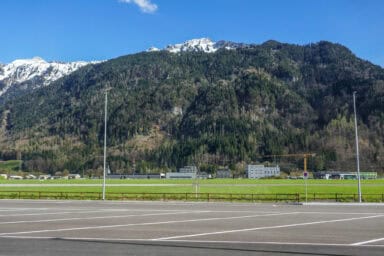

Travel distances and durations
The Jungfrau Region is a small area. The towns and attractions are relatively close to one another, which explains why you can see a lot in just one day.
Some examples:
- The train ride Interlaken-Lauterbrunnen takes 0h22.
- The train ride Interlaken-Grindelwald takes 0h36 minutes.
- Getting from Wengen above the Lauterbrunnen Valley to Mürren on the other side of the valley requires 0h42 minutes.
- You need 0h45 minutes to 1h00 to get from Wengen to Grindelwald in the adjacent valley.
Rail passes suitable for the Jungfrau Region
There are nation-wide passes that are also valid in the Jungfrau Region. Examples are the Swiss Travel Pass and the Swiss Half Fare Card.
In addition, there are regional passes that include most of the mountain trains and cable cars in the Jungfrau area. The main ones are:
- The Jungfrau Travel Pass. This is a good choice if you'll focus on the Jungfrau Region only.
- The Berner Oberland Pass. This is a good pick if you want to travel west, north, or east of Interlaken too.
If you need help figuring out which rail pass suits your plans, please use our guide with free tools and a step-by-step plan.
Train and mountain railway companies
Public transport in the Jungfrau Region is operated by several companies. Together, they form a seamless network of trains, cogwheel trains, cableways and funiculars. You'll hardly notice this variety of companies.
Simplified, this is how things work:
- The Berner Oberland-Bahn ("BOB") operates the trains between Interlaken Ost, Zweilütschinen, Lauterbrunnen, and Grindelwald.
- The Jungfraubahnen (or "Jungfrau Railways") is an umbrella term for several sub-companies. Together, they provide traveling to Wengen, Grütschalp-Mürren, Kleine Scheidegg, Eigergletscher, Jungfraujoch, Schynige Platte and Grindelwald-First. An example of a sub-company is the Wengernalbahn ("WAB"), operating the cogwheel trains between Lauterbrunnen, Wengen, Kleine Scheidegg, and Grindelwald.
- Additional smaller companies operate other routes, such as the cableways to Schilthorn and Männlichen, or the buses in and from Grindelwald.
The Swiss timetable contains all routes, with all modes of transport, by all companies.
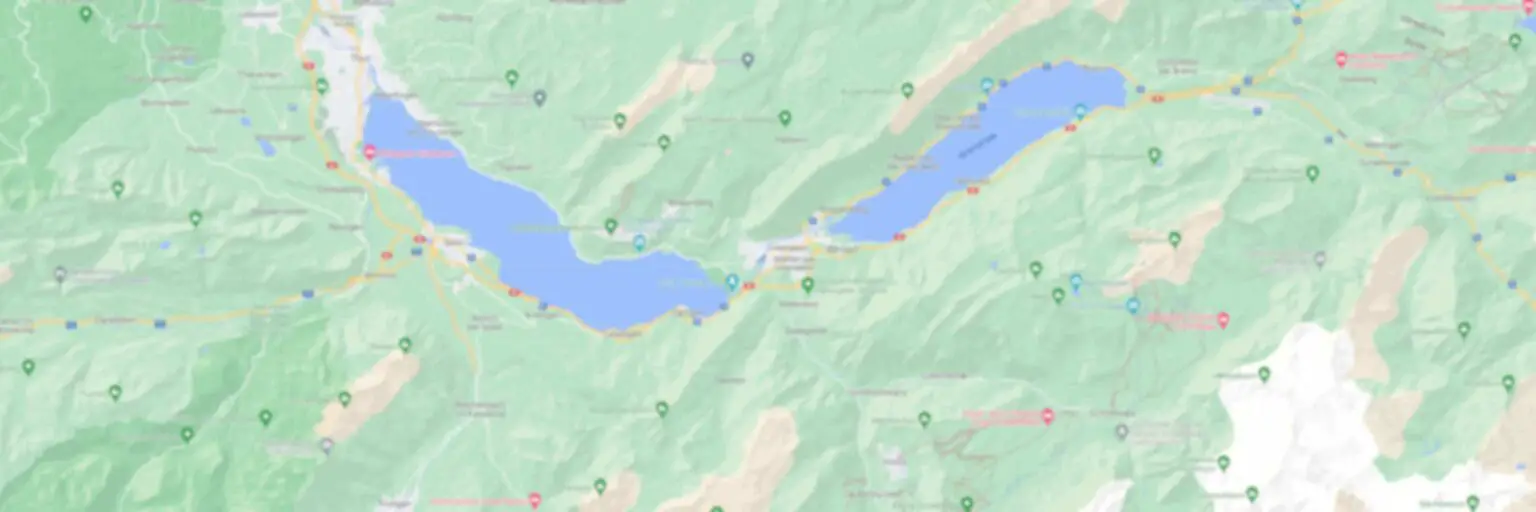
Best months to stay in the Jungfrau Region 
I recommend visiting the Jungfrau Region in early January to late February and late April to late October:
- January and February are best for a winter stay. These are the coldest months in which you can expect most snow in the mountains.
- Late April to October are fine for other outdoor activities.
January and February
December can be a bit too early to expect a sufficient amount of snow in the mountains of the Jungfrau Region. That's why I prefer the months of January and February: they offer the best chance of winter fun in the mountains.
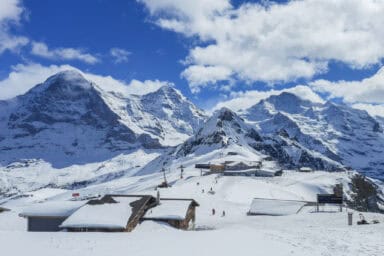
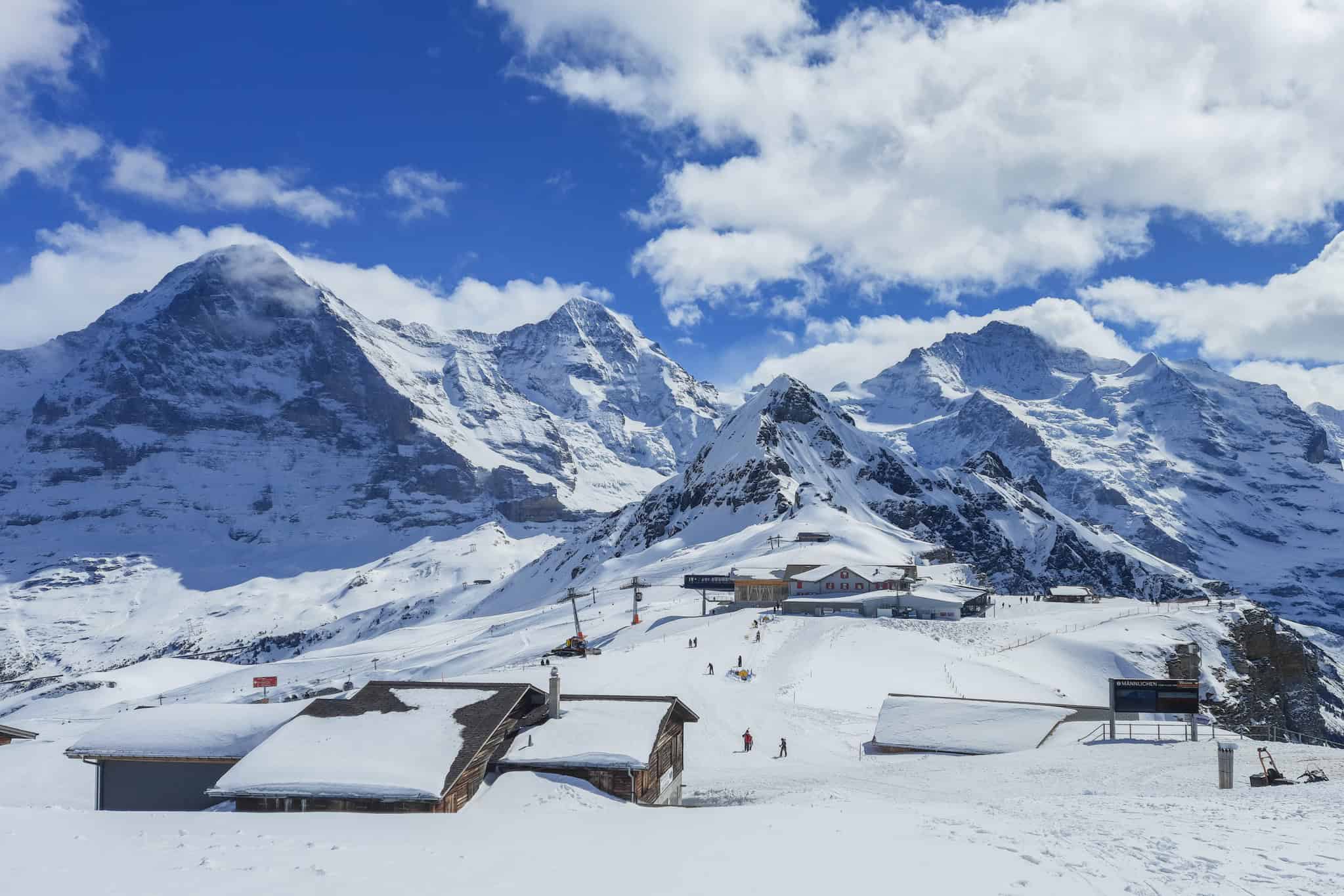
The snow season can start earlier and last longer than this. This varies each year. Mountain transport in the Jungfrau Region mostly has fixed operation dates. But in exceptional cases, if there's a lack of snow for example, the cableways may start operating later or stop earlier.
April and May
Late April and May are low season in this region. Still, I love visiting during this time of the year. Even though alpine hikes mostly aren't possible yet, and you can't visit all mountains because of maintenance breaks, the peace and quiet are wonderful.
You can enjoy scenic train trips and valley hikes. And the scenery is at its best, with a stunning combination of flowery spring meadows, blossoming trees, and snow on the mountain peaks.
June, July, August
Most mountain transport is running by June. This is when you can enjoy nearly all activities, except maybe for the high-altitude hiking routes.
July and August are the warmest, and also the busiest months. Many tourists from abroad visit the Jungfrau Region. The Swiss themselves do too during the school holidays.
You can still beat the (potential) crowds: taking the first cable car or mountain train of the day is a simple trick.
September
September is a perfect month in the Jungfrau Region. The air is often crisp and clear, there are fewer tourists, and weather can be very pleasant.
The downside is that there's not much snow left on the peaks, especially after a warm and dry summer.
October
October is when fall begins. I love how the valleys and trees start coloring. And more than once, we've been able to rise above low-hanging clouds in the valley, looking down on them from a mountaintop in the beaming sun.
Most mountain transport in the Jungfrau Region operates until mid-October.
November and December
November and the first half of December are low season. There's normally fresh snow in the mountains, but it can be too early for snow activities. Several mountain transport routes are closed for maintenance.
The 2nd half of December is much more popular. This especially goes for the days around Christmas in mountain villages like Wengen, Mürren, and Grindelwald. Most mountain routes start operating, and so do ski lifts in favorable weather.
Jungfrau Region weather and forecasts 
Which temperatures to expect
Temperatures drop with altitude. This means that it's significantly warmer in Interlaken or Lauterbrunnen (in the valley) than in Wengen or Mürren (on the mountain slopes). Examples:
- Typical summer daytime temperatures for Lauterbrunnen at 800 m altitude are 19°C to 23°C. In winter it can get 5°C to 10°C.
- Average summer daytime temperatures for Wengen, which is about 400 m higher, are 14°C to 20°C. Expect 2°C to 6°C in winter, with reasonable chances of frost at night.
You'll experience even larger differences when traveling up and down the mountains. That's why it's so important to dress in layers and adapt to varying temperatures.
When to expect rain
It can rain year-long in the Jungfrau Region. Most rain falls between May and August. If you see rain in the forecasts, this can mean several things:
- Typical patterns for warm days are a clear start in the morning, then a building of clouds in the day, followed by showers in the late afternoon or early evening.
- On other days, there's a mixture of sunny and rainy spells.
Bottom line is that I experienced continuous rain for days only a few times during our visits. A mix of sun and rain, or brilliant skies for days or even weeks in a row, are more likely.
Snow in the Jungfrau Region
Snowfall in the mountains of the Jungfrau Region is common from December to March, sometimes even April.
Don't expect snow in the villages though. Although Wengen, Mürren and Grindelwald are likely to get snow-covered, there's no guarantee. You may need to use cableways and ski lifts to start your winter activities.
Fog and low clouds from in fall and winter
Year-long, fog or low clouds may block the views from the valleys of Lauterbrunnen and Grindelwald. This is especially common in autumn (October-December), and to a lesser degree in winter.
Make sure to check mountain webcams each morning. That's because the sky at higher elevations may be perfectly clear. So a mountaintop visit may pay off, and it can even be special: looking down on the clouds is magical.
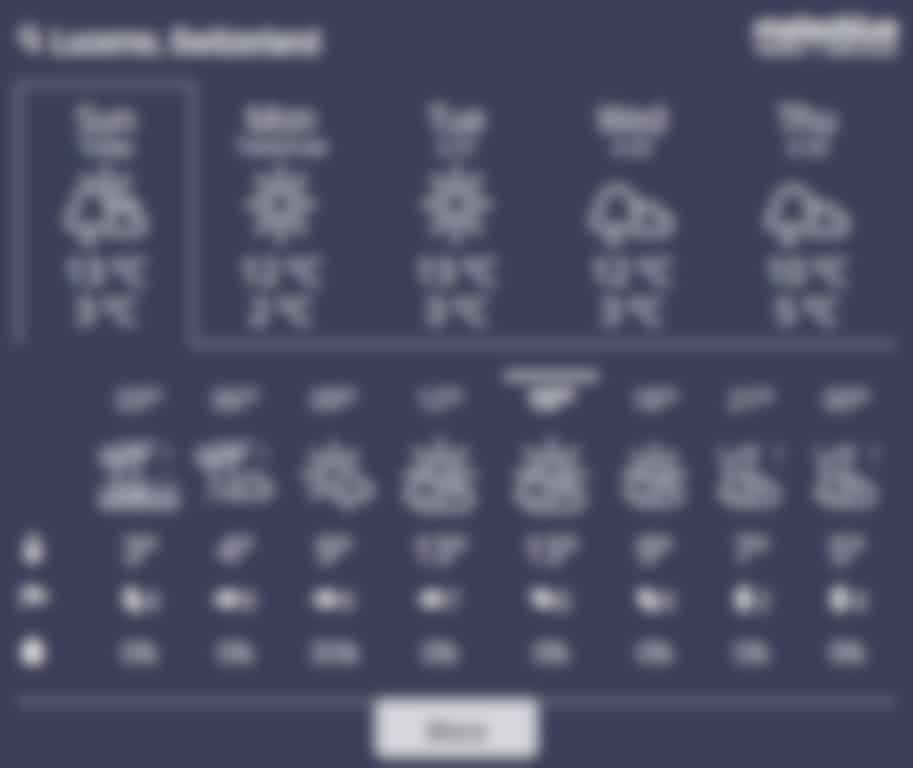
Accommodation tips for the Jungfrau Region 
The Jungfrau Region is packed with hotels and holiday rentals. Still, I recommend booking early, especially if you're traveling in popular months such as January, February, and June to August.
My Jungfrau Region hotel guide and rental overview provide a wide choice of accommodation.
Alternatively, check my hotel tips per town:
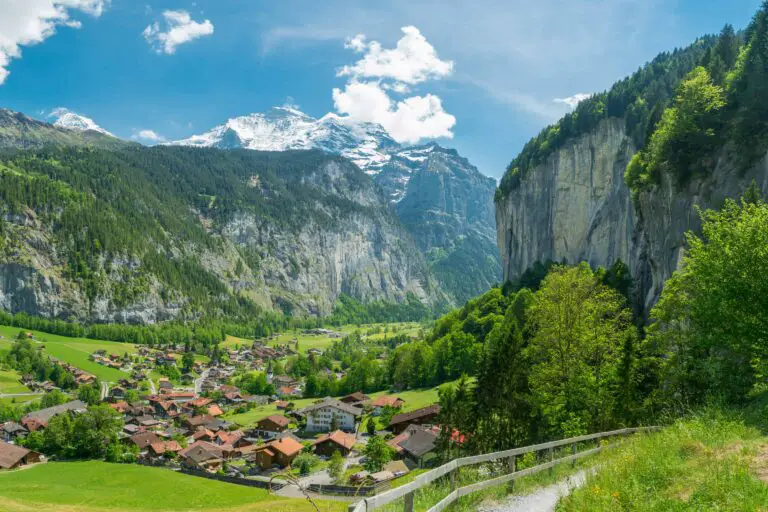
Hotels in the Jungfrau Region, Switzerland
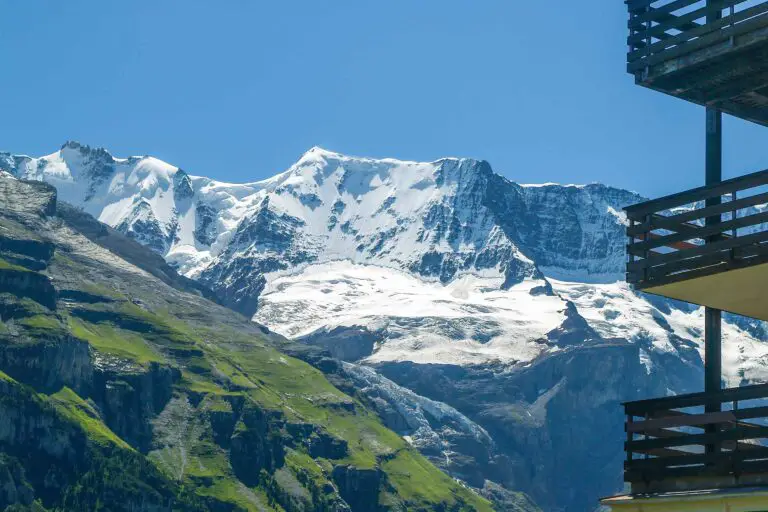
Chalets and apartments in the Jungfrau Region
The pros and cons of the Jungfrau Region
The pros of the Jungfrau Region
This is why the Jungfrau Region keeps attracting many visitors, including me:
- If there’s anything like “perfect scenery”, the Jungfrau Region has it. The combination of valleys, waterfalls, massive steep rock walls and snow-capped peaks is amazing. The landscape is lovely and impressive at the same time.
- There are lots of things to do, and they’re all a short distance away. So in just one or two days, you can go hiking, visit a vantage point in the mountains, make scenic train or cable car rides, and add a boat trip on the nearby lakes of Thun or Brienz.
- There aren’t many peaks that can match the iconic mountain trio of Eiger, Mönch and Jungfrau. And you can view them up close, especially on Kleine Scheidegg where you’re at the foot of these mighty mountains.
- The area is easy to reach from Swiss cities and towns in the north, such as Basel, Bern, Lucerne, and Zurich.
- If you’re based near Interlaken, you can visit surrounding areas with different scenery as well. Examples are other areas in the Bernese Oberland. Even day trips to Lucerne or Zermatt are doable.


The cons of the Jungfrau Region
These could be reasons to skip the Jungfrau Region:
- Weather in the mountains dictates your plans. The mountains are the Jungfrau Region’s main appeal. Views are less impressive (or non-existing) if it’s cloudy. For more flexibility, you may prefer a more central location outside the Jungfrau Region, such as Thun or Bern.
- The area can be touristy, especially in high season months. Famous attractions such as Schilthorn and Jungfraujoch can feel crowded, especially during weekends (when the Swiss themselves are free too), during Swiss public holidays, and on particularly sunny days. If you can visit the region in April-June, or in September-October, you’ll have a more relaxed experience.
- You may prefer exploring areas off the beaten track. In that case, I recommend you focus on less well-known regions: the three-lake area around Neuchâtel, the Jura mountains, or the vast area of Graubünden for example.
Where to stay in the Jungfrau Region
The best town to stay in: the answer in short
- Do you prefer a lively place with lots of shops and restaurants and good train connections to other regions? Then pick accommodation in Interlaken.
- If you value nature and the option to start hiking directly from your hotel, then look into Grindelwald, Lauterbrunnen, Mürren, and Wengen.
- Wilderswil offers the best of both worlds: it’s close to the facilities of Interlaken, but it’s a small quiet village.
A comparison of the Jungfrau Region towns
The best place for a stay in the Jungfrau Region depends on your priorities. We provide in-depth information about each town in our guides. In addition, here are the towns’ main features to help you compare:
- Interlaken is the largest town, located between the beautiful Lake Thun and Lake Brienz. It’s not particularly picturesque, but it is practical as there are many hotels, shops, and restaurants. Also, you can easily travel to several areas in the Bernese Oberland. Hiking options directly from town are limited.
- Grindelwald, at the base of the Eiger, is the largest town after Interlaken. It can be touristy at times. The town offers easy access to Jungfraujoch, First and Männlichen and lots of hiking trails.
- Lauterbrunnen, down in the Lauterbrunnen Valley with its many waterfalls, is small but centrally located. You can quickly reach Wengen and Mürren from here, and Interlaken is just 20 minutes by train.
- Wengen is a car-free village on a plateau, with beautiful mountain views, access to Männlichen and Jungfraujoch, and lots of hiking trails. It’s a good base if you want to focus on the Jungfrau Region. It’s less suitable to explore other areas you: you’ll have to factor in extra traveling time from and to Lauterbrunnen for most trips.
- Mürren is a car-free village on a plateau, with great views over the Lauterbrunnen valley, access to the Schilthorn, and quite some hiking trails. Just as is the case for Wengen, traveling to other parts of the region takes a bit longer.
- Wilderswil is located just south of Interlaken. It’s smaller, but also prettier than Interlaken. With several supermarkets, hotels and restaurants if offers all basics for a great stay. There are perfect connections to Interlaken and the rest of the Jungfrau Region.
- Gimmelwald is a tiny car-free settlement near Mürren. There aren’t many facilities. I don’t recommend staying there, unless your main objective is to relax and enjoy the wonderful views. Find my detailed opinion here.
- Stechelberg is tiny as well has a somewhat isolated location at the end of the Lauterbrunnen Valley. It can be reached from Lauterbrunnen by bus or by car.
How long to stay in the Jungfrau Region
How many days to spend in the Jungfrau Region
If your itinerary allows, try spending at least 4-5 days here. In this timeframe, you can visit several mountain tops, make a couple of hikes, and enjoy the region from different angles without feeling rushed. A 4- or 5-day stay also increases your chances of visiting vantage points in good weather.
If you have a limited number of days available, try staying for at least 2 nights (so 1 full day) in the Jungfrau Region.
How long we stay in the Jungfrau Region ourselves
Arno and I have stayed in this area for 2 to 3 weeks in a row (in Wilderswil to be precise), and we’ve repeated this several times without once losing our interest. To me, the idea that “if you’ve seen one mountain, you’ve seen them all” does not apply. I feel that every corner of the Jungfrau Region is unique in its own way.
What to see and do in the Jungfrau Region 
Jungfrau Region must-sees
If your time in the area is limited, these are must-do activities:
- Visit a mountain top, such as Jungfraujoch or Schilthorn, for an up-close view of the Alps.
- Make a hike. Even simple short trails like Grütschalp to Mürren are a delight. A walk in the Lauterbrunnen Valley is a good option too.
If you're really pressed for time, you can do the one-day Jungfrau Region trip we composed to see several highlights.
The mountains of the Jungfrau Region
You may have heard of the famous Schilthorn and Jungfraujoch. But there are more viewing points. Roughly from north to south, these are:
- Schynige Platte, to be reached by cogwheel train from Wilderswil. You'll have great views of Lake Brienz in the north, and the Eiger, Mönch and Jungfrau mountains in the south.
- Grindelwald-First, a top above Grindelwald that's packed with fun activities. You'll also look down on the Grindelwald Valley and the Wetterhorn, and you can walk to the mountain lake Bachalpsee.
- Pfingstegg, an affordable viewpoint south of Grindelwald with a toboggan run.
- Männlichen, to be reached by cable car from Wengen and gondola from Grindelwald. This is one of the best places to see the peaks of the Jungfrau Region, plus the valleys of Grindelwald and Lauterbrunnen.
- Kleine Scheidegg, which is more of a 'saddle' than an actual mountain top. You can reach it en route to the Jungfraujoch. It's well worth a stop. There aren't many other spots where you're so close to the imposing Eiger, Mönch and Jungfrau.
- Allmendhubel, an affordable viewpoint that's just a short funicular ride from Mürren.
- Schilthorn, above Mürren too. There's a 360°-view of the Bernese Alps here, which you can enjoy from the revolving restaurant.
- Jungfraujoch, the highest rail station of Europe. You're literally within the Alps, which is a magical experience.
Free vistas: great views without paying for mountain transport
Assuming you have a rail pass that allows free traveling, you can also enjoy the Jungfrau Region from valleys and free mountain locations.
Some of my preferred spots are:
- Winteregg. This tiny train station on the way from Grütschalp to Mürren has lovely views over the Lauterbrunnen Valley and the snowy peaks south of it.
- Girmschbiel. This small meadow is just a few minutes walk from the train station of Wengernalp (between Wengen and Kleine Scheidegg). You'll come face to face with the Jungfrau, the Breithorn, and other mountains.
- Grosse Scheidegg. This bus stop is located in the mountains between Grindelwald and Schwarzwaldalp in the Reichenbach Valley. There are wonderful views of the mountains Wetterhorn and Eiger, and you'll look down on the village of Grindelwald.
More about the towns in the Jungfrau area 
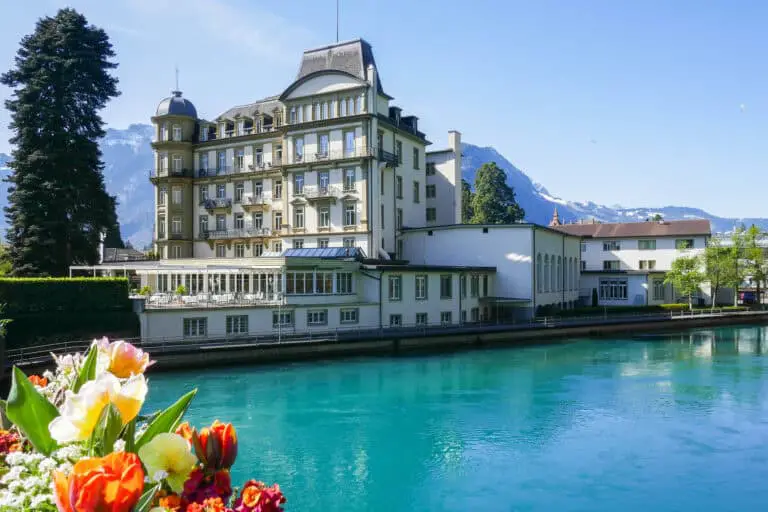
Interlaken
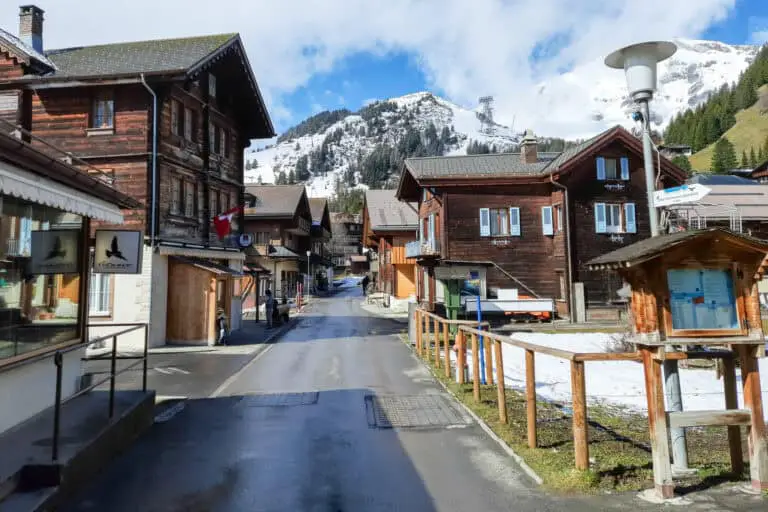
Mürren
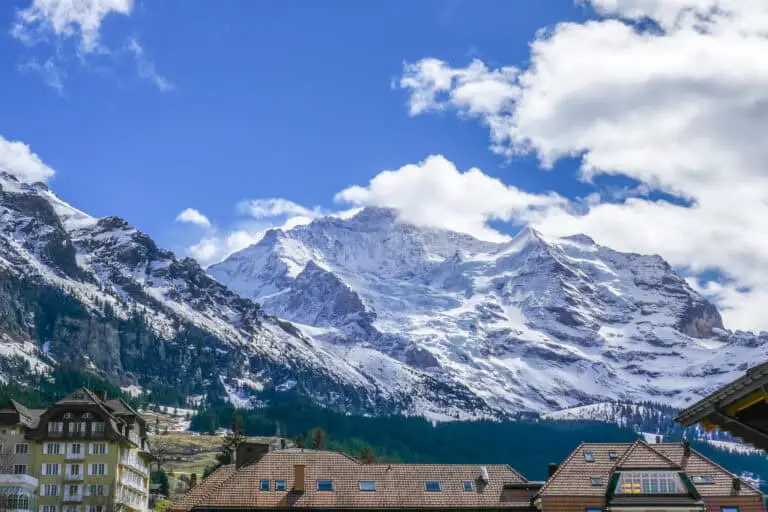
Wengen
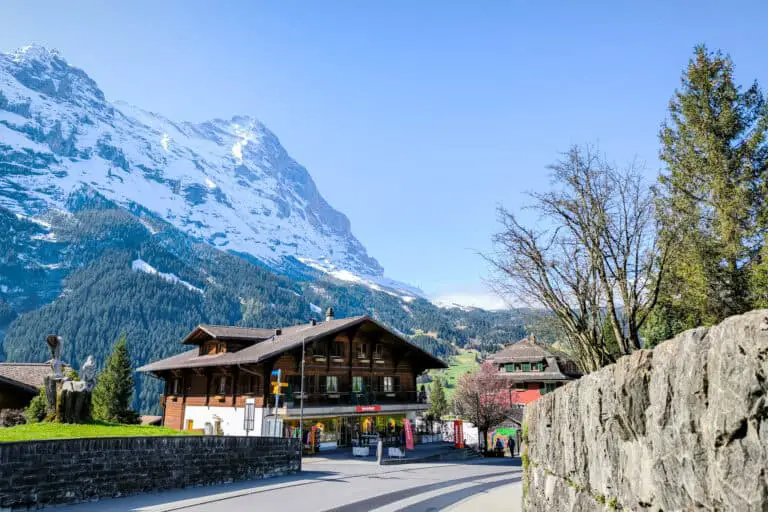
Grindelwald
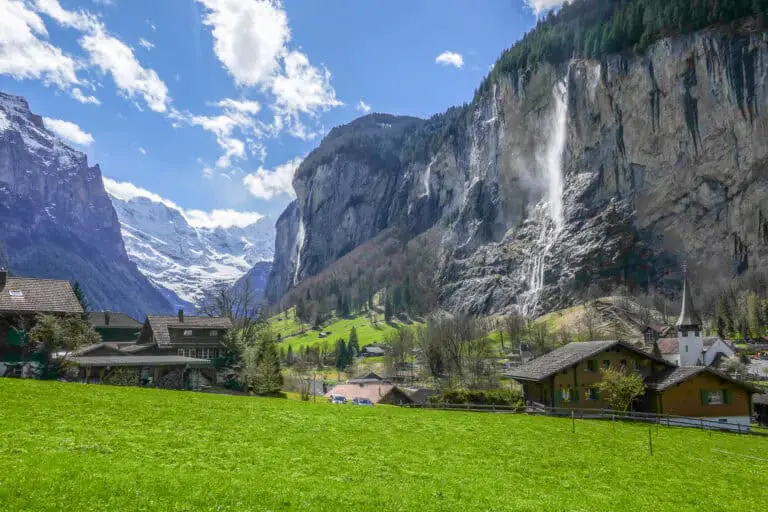
Lauterbrunnen
Itineraries that include the Jungfrau Region 
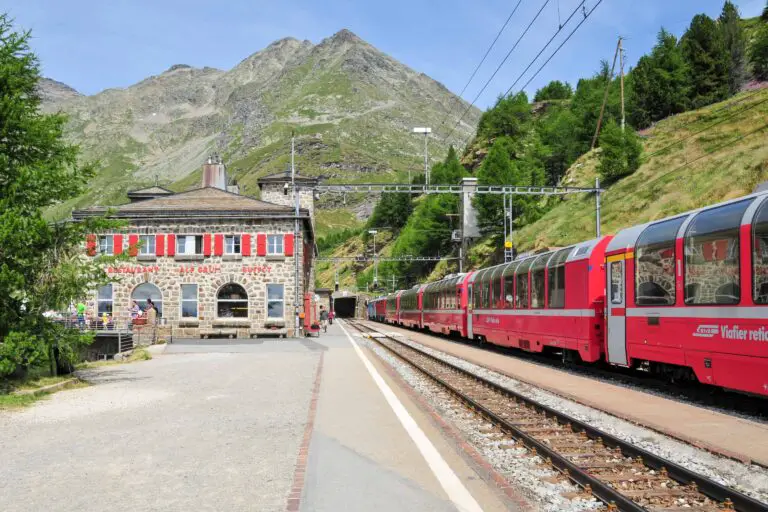
Ultimate scenic trains
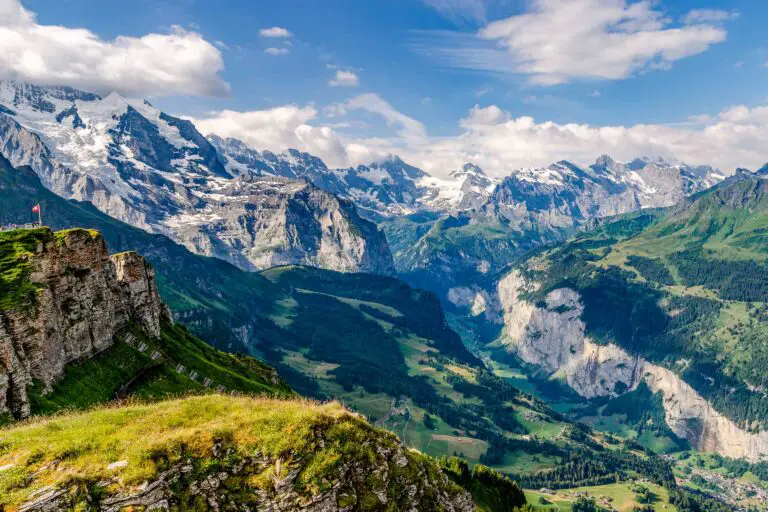
Best of the Alps
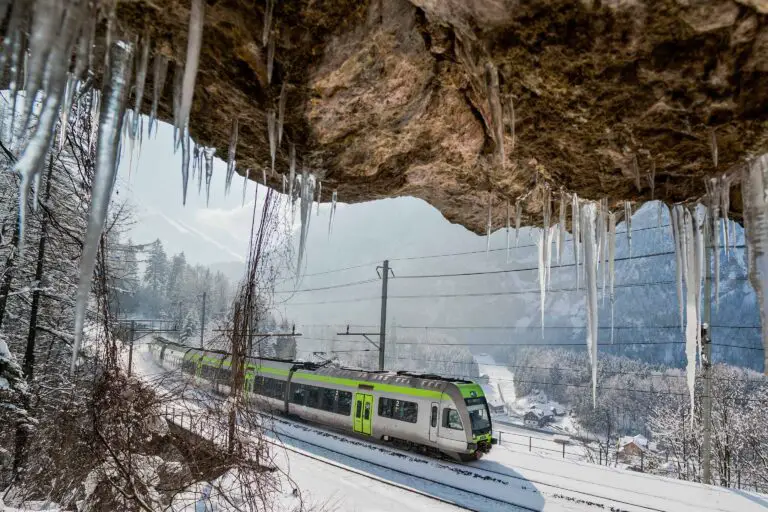
Scenic trains winter
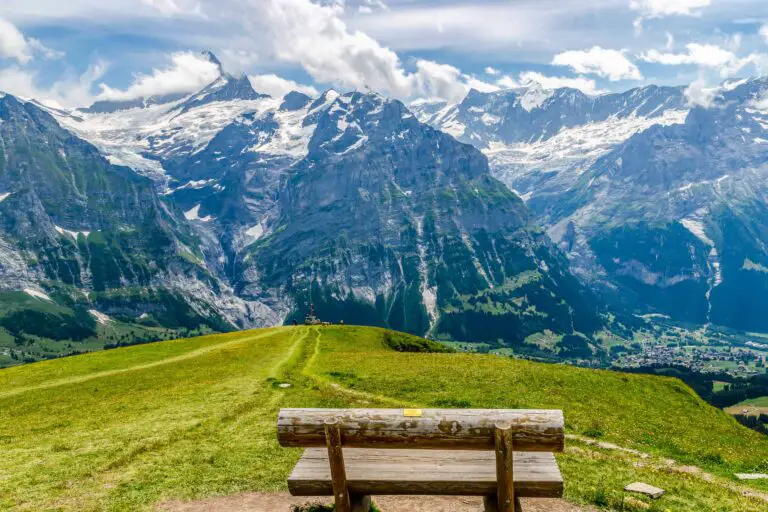
Hike First-Grosse Scheidegg
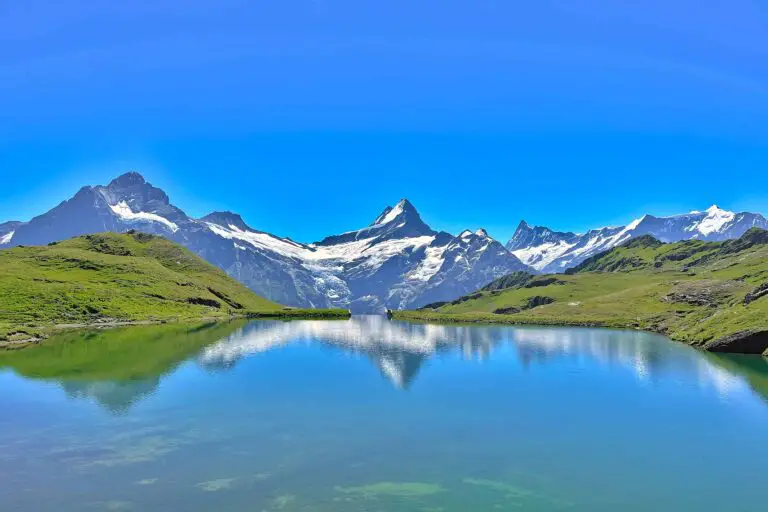
Hike First-Bachsee
